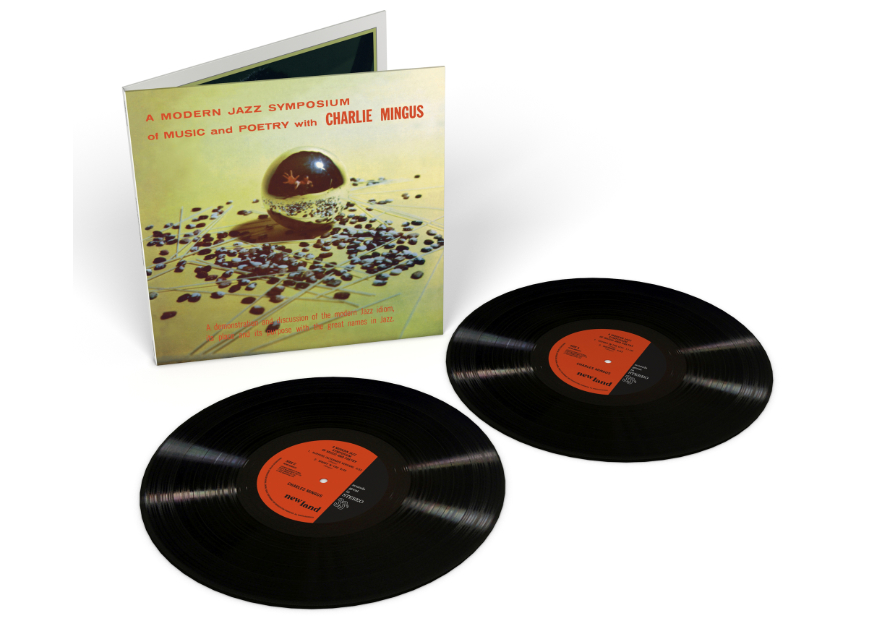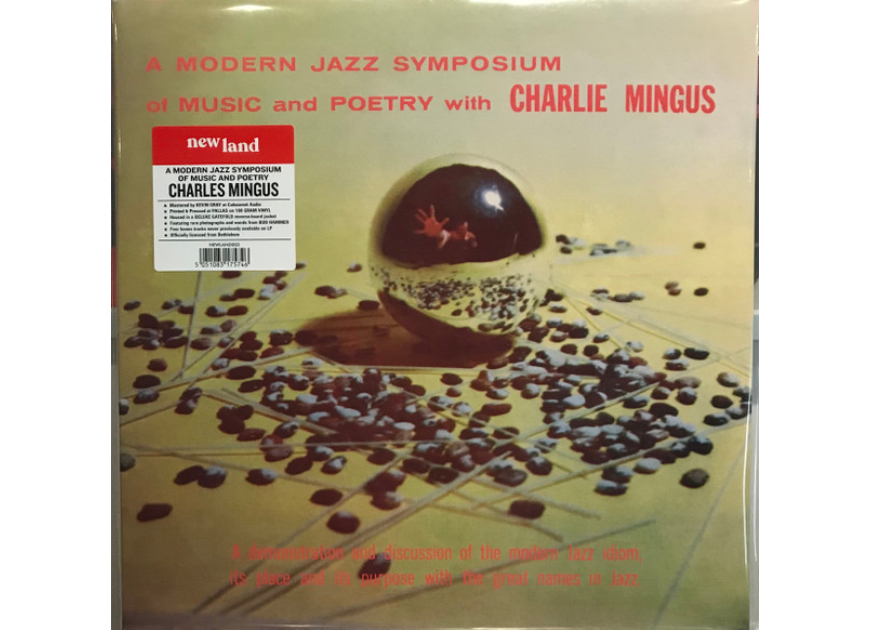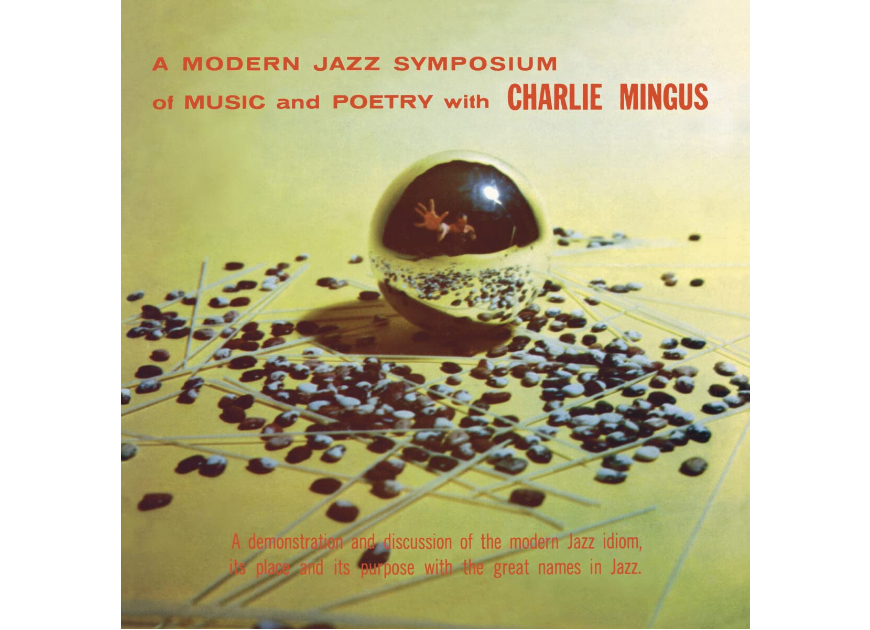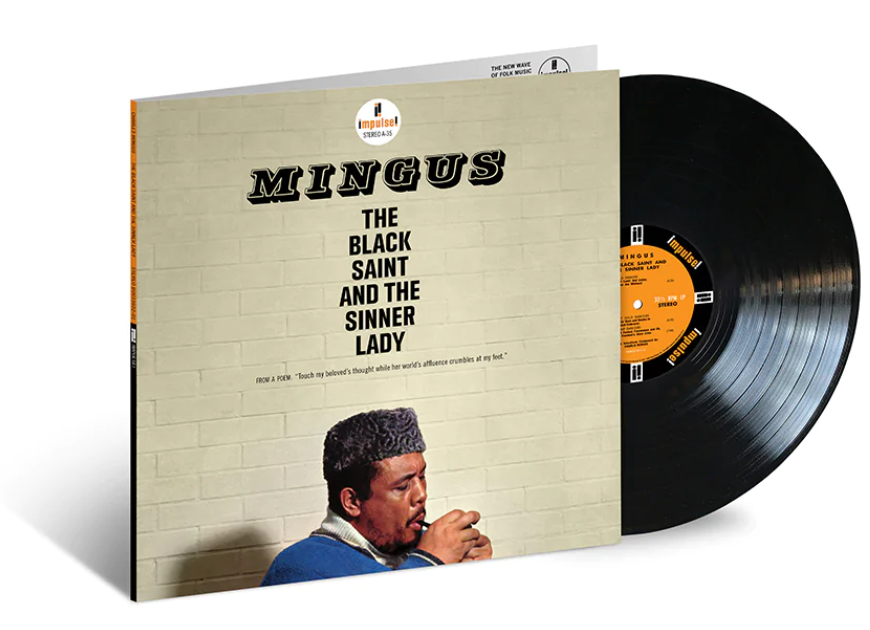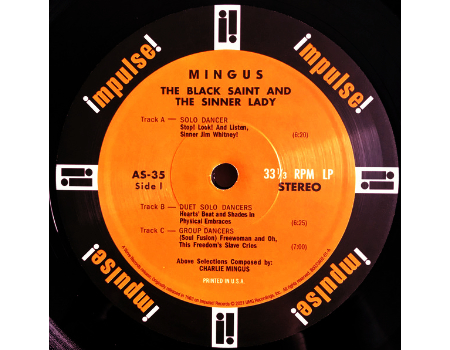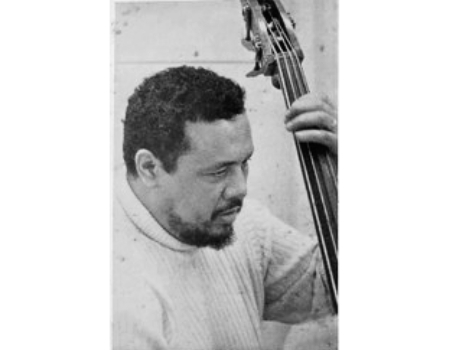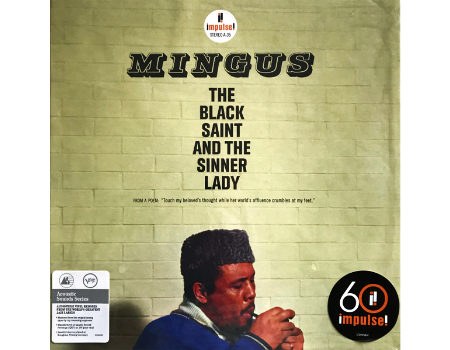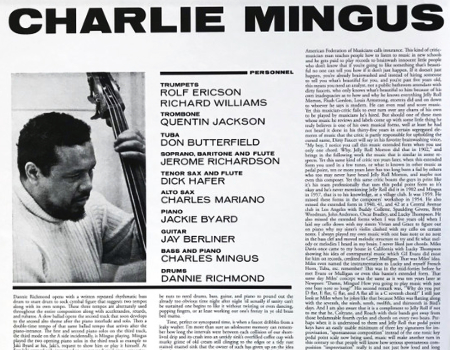Finding good sounding clear originals of Charles Mingus’ early recordings from the Fifties and Sixties isn’t straightforward, particularly as of late. But some albums are particularly elusive, akin to his recordings for Bethlehem Records. Sure they’re on digital platforms and CDs, a few of which I’ve had for a very long time. A lot of years in the past I discovered a “grey market” copy of an particularly elusive late ‘50s launch which I picked up cheaply however by no means actually preferred the way it sounded. It felt very clearly prefer it was constituted of a low high quality digital supply.
Then a couple of 12 months in the past at a report swap meet — the Down Home Music Parking Lot sale in El Cerrito simply north of Berkeley, for these of you who come to the San Francisco Bay Area — I had a stroke of excellent luck. A vendor there was parting with an unique Mono copy of this uncommon marvel, A Modern Jazz Symposium Of Music and Poetry With Charlie Mingus for simply three {dollars}! I used to be virtually afraid to have a look at the situation of the vinyl and simply purchase it blindly however I did look. And it was certainly scary trying however I took an opportunity on it anyhow, the album’s cowl scotch-taped collectively and tremendous soiled vinyl exhibiting the proof of an album nicely beloved and appreciated over time (extra cynical collectors may name this a “performed to demise” or “trashed” copy however I had larger hopes…).
A Modern Jazz Symposium Of Music and Poetry With Charlie Mingus is a type of records that not often pops up anyplace and this was the primary time I’d seen a duplicate out within the wilds. I took it house, gave it a couple of washings and was happy to see that it was cleansing up fairly nicely — it was very very soiled! — however the vinyl was shiny and regarded like it could be playable. Save for, nevertheless, the opening grooves on facet one which regarded particularly scary-awful, like somebody may need dragged a screwdriver throughout the grooves (or extra probably it was performed on a report participant with a heavy, poorly aligned tone-arm.
Gingerly, I lowered the stylus of my least costly cartridge (a Grado Black) to the grooves to see what may occur. Wonder of wonders — and miracle of miracles! — the report performed via usually, with out any skipping or the wooshing sounds I anticipated. I used to be amazed! As it turned out the entire album sounded fairly good, even nice at occasions even on Side Two… The disc sounded even higher utilizing my Mono cartridge finally.
So I sat again to hear and indulge in Mingus’ music and for the primary time, I felt I used to be listening to and connecting with this recording. I might really feel Mingus’ presence on these grooves — clearly this was a passionate undertaking for him.
Especially in that opening observe, “Scenes In The City” he presents a kind of gritty street-weary, beat poetry and jazz flipside twist on Gordon Jenkins’ basic Nineteen Forties ultra-kitsch glitzy early audio documentary idea album, Manhattan Tower, Mingus’ take presents a day within the lifetime of a struggling Jazz musician. Here in stead of basking within the radiance of an excellent metropolis excessive rise like Jenkins’ star, Mingus’ characater is barely making ends meet financially, residing in a tiny room with a shared lavatory in a stroll up method uptown in Harlem, removed from the downtown glories of Manhattan’s jazz scene. After a couple of listens you notice this isn’t only a story Mingus has woven randomly and that it’s most likely nearer to the reality than any of us would care to imagine as an artist of such stature (he was finally dramatically evicted from his condominium within the mid 60s!).
Working via Nat Hentoff’s copious liner notes on the again of the album, we study that the narration right here was carried out by actor Mel Stewart and the script was conceived and written by Pulitzer Prize and Academy Award nominated African-American actor, playwright and screenwriter Lonnie Elders with assist from acclaimed Jazz poet Langston Hughes. Together, they seize Mingus’ essence to the purpose the place (earlier than studying the liner notes intently ) I initially thought Mingus was doing the speaking! It feels like Mingus!
Side Two is sort of the proper triptych, delivering “New York Sketchbook,” adopted by the attractive “Duke’s Choice” — with an incredible trumpet solo by Clarence Shaw — after which driving house the Be Bop bliss in a smoker known as “Slippers” which appears like a pre-echo of Coltrane’s “Countdown” and “Giant Steps.”
So why was such a fantastic album so out of print for years in a reputable kind? I don’t know however I think about it’s some mixture of points relating to possession of the recordings, finding the unique tapes, discovering the funds to license mentioned recordings for reissue after which in fact hiring nice mastering engineers, restoring the tapes, discovering unique cowl artwork components (and updating them accordingly for contemporary distribution wants) after which in fact urgent the discs themselves. There are loads of shifting components to this means of placing out a report!!!
That mentioned, New Land has achieved a reasonably exemplary job on this reissue of A Modern Jazz Symposium Of Music and Poetry With Charlie Mingus. From their web site we study that “the recordings have been remastered from the unique tape transfers and lacquers minimize by Kevin Gray.” The recordings — formally licensed from BMG, homeowners of the Bethlehem Records catalog at current, and accepted by the Charles Mingus property — sound excellent, wonderful even.
But a few of it’s possible you’ll be questioning whether or not they have been remastered in an “all analog” course of. That half is admittedly unclear right here. Recent language I’ve been seeing coming via in press releases from quite a lot of entities use imprecise language like “remastered from unique tape transfers” which — and I’m guessing right here, of us — appears to suggest that the remaster have been constituted of a duplicate of the unique tape. Whether the “switch” was made to a digital platform (probably) or analog (potential however with a era of sign loss, so much less probably) is to be decided.
All that mentioned, A Modern Jazz Symposium Of Music and Poetry With Charlie Mingus nonetheless sounds very very good with a heat end to the music that enables me to show up the amount on my amplifier with out that ear-piercing crunch of a poor digital switch or dangerous mastering. So kudos to the reissue’s producers and mastering engineer Kevin Gray for making certain that this album sounds nearly as good as it will possibly.
In distinction, my earlier “gray market” unofficial launch (on the Doxy label) sounds harsh, at occasions even a bit pulse-y as if an excessive amount of compression or noise discount was utilized. It is usually a not particularly fulfilling hear and I’ll be glad to lastly purge this copy from my assortment now that I’ve a a lot better model!
Please observe that the unique Stereo tapes do have some drop outs in them so don’t be stunned if you happen to hear moments of audio oddness. It is perhaps a wrinkled tape supply or maybe an edit “splice” that was in want of restoration. They are obvious in each the Doxy and new editions (however neither are main issues… that is only a heads up for a few of you who, like me, discover high-quality particulars like that).
You will need to flip up the amount on this album at occasions. Even the bonus tracks smoke, particularly the jam on the basic Charlie Parker tune “Billie’s Bounce” which is taken at a tempo that may have even made Bird break a little bit of sweat.
I’ve to supply some kudos to the producers for the duvet artwork and the way it was all offered right here. Expanded to a gatefold sleeve, the packaging for this reissue of A Modern Jazz Symposium Of Music and Poetry With Charlie Mingus incorporates a “reverse-board” flat-matte kind end which seems very good (though it’s completely different than the unique pressings which have been extra of the tip-on type, printed on shiny inventory). The new 180-gram albums have been pressed at Pallas in Germany and the discs are available good black plastic-lined audiophile grade inside sleeves. My copies weren’t utterly flat however the very slight warp didn’t have an effect on play in any respect. More importantly (for me at the least) is the truth that the discs are all nicely centered and really quiet so the noise ground just about disappears.
Also, I used to be very happy in regards to the plastic outer bag the album is available in. It isn’t the everyday loose-ish polybag (as you may get on an Acoustic Sounds or Tone Poet reissue) neither is the tremendous skinny fragile Japanese plastic sleeves (which I’m not fan of as they’re troublesome to open and reseal, the paper-inner-sleeved albums typically get caught in opposition to the sticky glue beneath the flap which all the time snaps down as you attempt to put the factor away… grumble grumble… I actually dislike these sleeves!). Instead, A Modern Jazz Symposium Of Music and Poetry With Charlie Mingus this involves you wrapped in a barely heavier, virtually vinyl-like plastic bag that’s fairly sturdy and simply resealable — the flap stays open with out trouble so it’s easy to take away and exchange the duvet with out it getting caught within the not-super-sticky glue. I actually recognize these baggage and its the primary time I’ve seen them — I’d attempt to down the place they’re made as i’d wish to get some, maybe for my rarest albums.
A Modern Jazz Symposium Of Music and Poetry With Charlie Mingusis a superb album which stands tall alongside Mingus’ different classics from this era akin to The Clown, Tijuana Moods and Mingus Three. The improbable band contains the good Jimmy Knepper (trombone), Shafi Hadi (tenor and alto sax), Bill Hardman and Clarence Shaw (trumpet), Horace Parlan and Bob Hammer (piano) and very long time Mingus drummer, Dannie Richmond, nonetheless early on of their musical relationship however already wed on the rhythmic hip (Mingus even says within the liner notes “I’d reasonably not use a drummer if he weren’t accessible”).
If you want Mingus and haven’t been in a position to hear this album in good high quality, this urgent ofA Modern Jazz Symposium Of Music and Poetry With Charlie Mingus is a should get. It is promoting for a really pretty priced $32 on Amazon (which you’ll order from on the hyperlink embedded within the title all through this overview). Essential listening for Mingus followers. Grab it now whilst you can.

